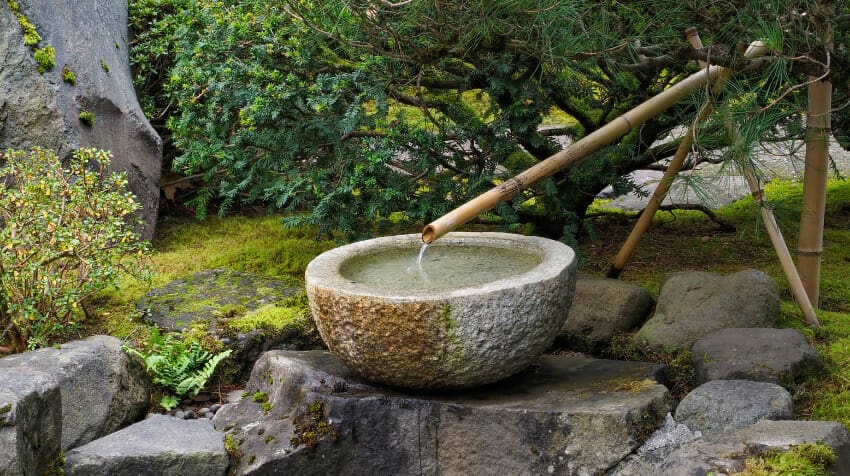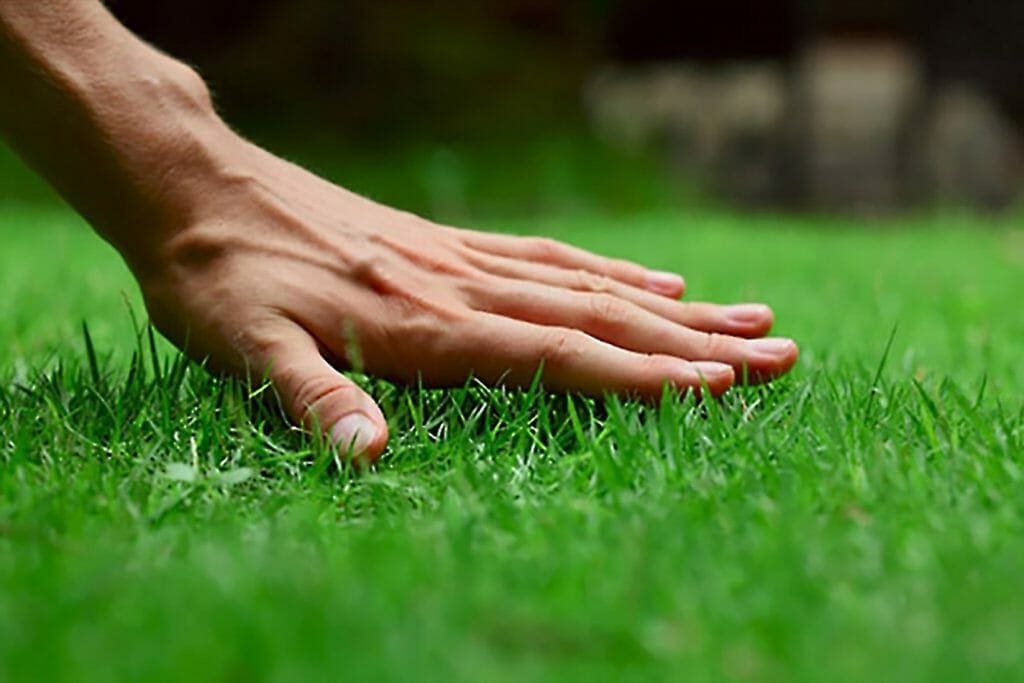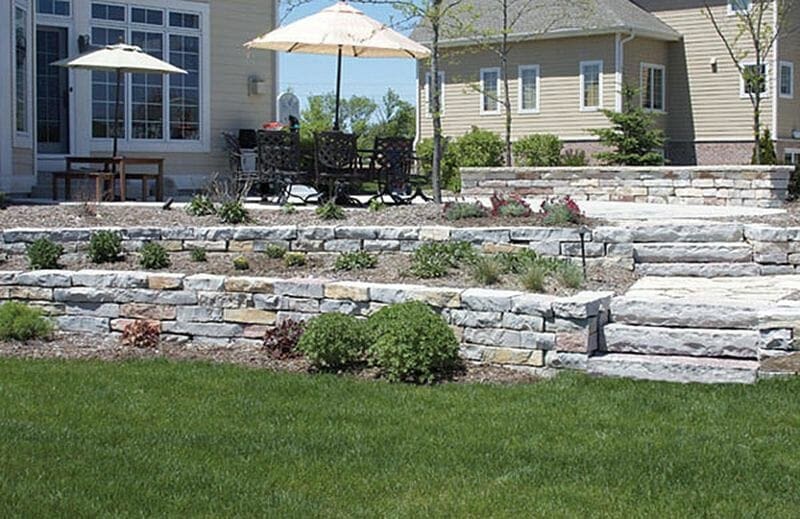Embrace Serenity: Transform Your Garden with Captivating Water Features
Are you looking for a way to transform your garden into a peaceful oasis? Look no further than enchanting water features. Adding a water feature to your outdoor space can enhance its beauty and serenity, providing you with a relaxing retreat from the stresses of daily life.
With so many types of water features available, it can be overwhelming to choose the right one for your garden. But fear not – whether you prefer the calming trickle of a fountain or the tranquil babble of a stream, there is a water feature that will perfectly complement your garden’s unique style and layout.
By following these simple steps for choosing, designing, installing, and maintaining your water feature, you’ll be on your way to creating an idyllic outdoor sanctuary that will soothe both body and mind.
Choose the Right Water Feature for Your Garden
It’s crucial to select the perfect water feature that complements your outdoor space and adds tranquility to it. Consider its benefits. Not only does it add beauty and elegance to your garden, but it also helps in reducing noise pollution as the sound of flowing water drowns out other noises. Water features also attract birds and butterflies, making your garden a haven for wildlife.
When selecting a water feature, you have two options: DIY or professional installation. If you’re skilled at building things yourself, a DIY project may be the perfect solution for you. However, if you’re not confident in your ability to install a water feature or want something more elaborate than what is available in stores, then hiring a professional might be best. Ultimately, the decision comes down to personal preference and budget constraints.
Now that you’ve selected the right water feature for your garden, let’s move on to design!
Design Your Water Feature
Now that you’re ready to create your own water feature, let’s dive into the design process and explore all the possibilities for your outdoor oasis.
First things first, consider the materials you want to use. Do you prefer natural elements like rocks or stones? Or would you rather go for a modern look with sleek metal or glass? It’s important to choose materials that complement your overall garden aesthetic and fit within your budget.
Speaking of budget, it’s crucial to plan ahead before diving deep into designing your water feature. Determine how much money you’re willing to spend on this project beforehand so that you don’t end up overspending. Keep in mind that some features may require more maintenance or additional equipment than others, which can add up over time. By setting a budget in advance, you’ll be able to make smart decisions throughout the entire design process and ensure that your final product is not only beautiful but also affordable.
As you start planning out your design and materials, keep in mind how installation will work. Consider what tools are necessary for installation and if any professional help is needed along the way.
With these factors in mind, let’s move on to discussing how to install your water feature seamlessly into your garden oasis.
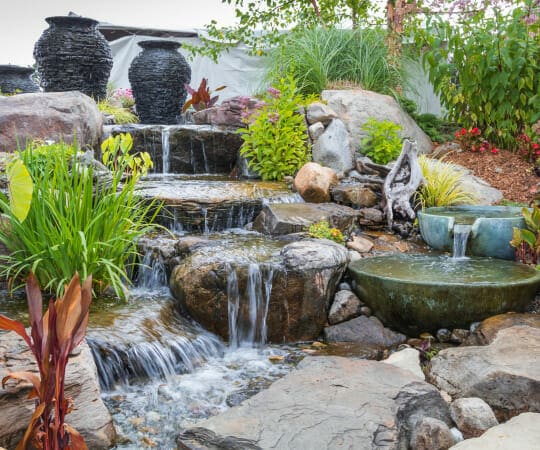
Install Your Water Feature
Now that you’ve designed your dream water feature, it’s time to bring it to life!
Before installing, make sure to prepare the site by ensuring a level surface and removing any debris.
Next, set up the plumbing and electrical connections to ensure optimal functionality.
Finally, add those finishing touches such as decorative stones or plants to truly bring your water feature to life.
With these steps complete, you’ll soon be enjoying the soothing sounds of trickling water in your own backyard oasis.
Prepare the Site
To get started, you’ll want to clear out any debris and level the ground in the area where you plan to install your new water feature, ensuring a stable base for your project.
Site preparation is essential before starting any excavation planning. You can start by removing all rocks, weeds, and other types of debris from the area. This will prevent anything from getting into your water feature once it’s installed.
Next, you’ll need to level the ground using a shovel or rake until it’s even.
Once you’ve prepared the site properly, it’s time to set up the plumbing and electrical connections for your water feature. But before that, make sure that the area is free from any obstacles that may interfere with the installation process.
With a well-prepared site, setting up everything should be a breeze!
Set Up the Plumbing and Electrical Connections
You’re ready to take the next step in creating your perfect water feature by setting up the plumbing and electrical connections.
When it comes to plumbing considerations, you need to ensure that you have a proper supply of water and drainage system in place. Make sure that you install a valve near the source of water, which will allow for easy access in case of any repairs or maintenance. For the drainage system, consider installing a drain at the bottom of your pond or fountain to prevent stagnant water.
When dealing with electricity, safety should be your top priority. Always turn off the power before working on any electrical connections and use a GFCI adapter for added protection. Be sure to follow all manufacturer instructions when wiring pumps or lighting fixtures. To avoid any mishaps, bury all cables below ground level and use waterproof connectors where appropriate.
With these precautions in mind, setting up your plumbing and electrical connections will be a breeze!
As you wrap up setting up your plumbing and electrical connections, it’s time to add finishing touches such as rocks, plants, or decorative statues around your feature to make it look more naturalistic and inviting.
Add Finishing Touches
Don’t forget to give your water feature some personality by accessorizing with plants, stones, or even a whimsical statue. The addition of natural elements will enhance the overall aesthetic and create a more inviting atmosphere in your garden. Consider placing potted plants around the perimeter of the feature or adding a small rock garden nearby. This will not only add visual appeal but also help tie in the water feature with the rest of your landscape design.
Another great way to add character to your water feature is by incorporating lighting options. Adding underwater lights can create a stunning effect at night and highlight any unique features such as fish or rocks within your water feature. If you have trees surrounding your garden, consider adding spotlights that shine on the water’s surface for an ethereal glow.
With these finishing touches, you’ll have an enchanting oasis right in your backyard. As we move into maintaining your water feature, remember that regular upkeep is essential for keeping it looking its best.
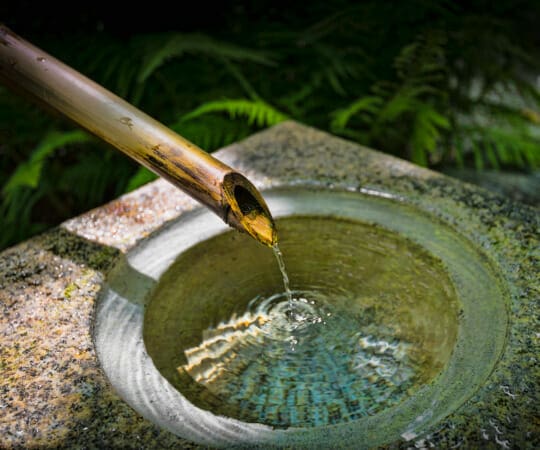
Maintain Your Water Feature
So, you’ve installed your water feature and it’s looking amazing. But the work doesn’t stop there!
To keep your garden oasis in pristine condition, you need to maintain your water feature regularly. Start by keeping the water clean with regular cleaning and adding beneficial bacteria. Don’t forget to check for leaks and damage, as even small issues can become big problems if left unaddressed.
And when winter rolls around, make sure to properly winterize your water feature to protect it from the harsh elements. By following these simple steps, you can ensure that your water feature stays beautiful and functional for years to come!
Keep the Water Clean
To make sure your pond stays crystal clear, regularly clean out any debris and consider investing in a filtration system. Regular maintenance is essential for keeping the water in your feature healthy and free from pollutants.
Debris such as leaves, twigs, and dead aquatic plants can accumulate at the bottom of your pond, causing it to become cloudy or murky. This can be harmful to the ecosystem living in and around your water feature. Using eco-friendly options like a net or skimmer to remove debris is an excellent way to keep things tidy without impacting the environment.
Investing in a filtration system will also help maintain optimal water conditions by removing excess nutrients that can lead to algae growth. Filtration systems come in various sizes and types, including biological filters that use beneficial bacteria to break down organic material, mechanical filters that physically trap debris, and UV clarifiers that kill harmful pathogens and reduce algae growth.
By using these simple maintenance techniques, you’ll have a beautiful water feature that’s not only aesthetically pleasing but also environmentally friendly. Now let’s move on to checking for leaks and damage to ensure everything’s functioning correctly!
Check for Leaks and Damage
Now that you’ve learned how to keep the water in your feature clean, it’s important to check for leaks and damage. Inspecting equipment regularly is necessary for ensuring that everything is functioning properly.
Look for any cracks or holes in the liner, as well as damaged pipes or pumps. If you notice anything out of the ordinary, it’s best to get it fixed as soon as possible. Repairing leaks is crucial because even a small leak can result in significant water loss over time.
Not only does this affect the overall aesthetics of your garden, but it can also lead to increased costs and potential damage to surrounding plants and structures. By identifying and repairing leaks early on, you can prevent these issues from occurring and continue enjoying your beautiful water feature year-round.
As we head into colder weather, it’s important to take steps to winterize your water feature.
Winterize Your Water Feature
Get your water feature ready for the colder weather by taking some simple steps to protect it and ensure that it’ll be in great condition when you’re ready to enjoy it again.
Winter maintenance is essential for any water feature, as cold temperatures can cause damage and even freeze the water inside. The first step is to remove any debris or leaves from the water feature, as they can decay and release harmful chemicals into the water.
Next, consider adding a protective cover over your water feature. This’ll help prevent snow and ice from accumulating on top of it, which could lead to cracks or other damage. There are many different types of covers available, so choose one that’s specifically designed for your type of water feature.
By following these simple steps, you’ll be able to winterize your water feature and ensure that it stays in perfect condition until spring comes around again.
Now that you’ve taken care of winter maintenance, let’s move on to how you can enjoy your tranquil garden with enchanting water features!
Enjoy Your Tranquil Garden
You can fully embrace the peaceful ambiance of your garden by taking a moment to sit and listen to the soothing sounds of nature. The sound of trickling water from your enchanting water feature is one that will transport you to a state of calmness and tranquility.
Maximizing serenity in your garden involves selecting the perfect location for your water feature. Consider placing it near a seating area or pathway so that you can fully enjoy its natural beauty. Once you’ve found the perfect spot, take time to appreciate the small details that make up your water feature.
Watch as sunlight dances across the surface, creating a dazzling display of light and shadow. Observe how different plants and flowers reflect on its clear waters, adding to its allure. Your tranquil garden is not only pleasing to the eye but also benefits your overall well-being by lowering stress levels.
Take advantage of this oasis in your backyard, breathe deeply, and let yourself be transported into a world of pure serenity.
Frequently Asked Questions
How much will it cost to install a water feature in my garden?
Installing a water feature in your garden can be an exciting and fulfilling project. The cost of installation varies depending on the size and complexity of the feature, as well as whether you choose to hire a professional or do it yourself.
If you opt for the DIY route, you can save money on labor costs but will need to invest in materials and possibly some specialized tools. The installation process involves digging a hole for the reservoir, laying down a liner, adding pumps and filters, and then placing decorative stones or plants around the feature.
Overall, installing a water feature is an investment that can add value to your home while providing a peaceful oasis for relaxation and enjoyment.
What types of fish can I add to my water feature?
When it comes to adding fish to your water feature, it’s important to consider compatibility and water quality. Not all fish can live harmoniously together, so research the types of fish that can coexist in your specific water feature.
Additionally, make sure the water quality is suitable for the type of fish you choose. This includes maintaining proper pH levels and providing adequate filtration.
With careful consideration and maintenance, adding fish to your water feature can enhance its beauty and create a serene environment for both you and your aquatic friends.
Can I use tap water to fill my water feature, or do I need to use filtered or distilled water?
If you’re wondering whether or not you can use tap water to fill your water feature, the answer is yes! However, you should be aware of the tap water quality in your area and take necessary precautions to ensure that it doesn’t harm your plants or fish.
It’s recommended that you let the tap water sit for a day or two before adding it to your water feature so that any chlorine evaporates. Additionally, regular maintenance tips such as cleaning out debris and checking pH levels will help keep your water feature healthy and thriving.
Are there any safety concerns I should be aware of when installing a water feature in my garden?
Installing a water feature in your garden can be a great way to add an element of tranquility and relaxation to your outdoor space. However, it’s important to keep safety in mind when doing so.
One maintenance tip is to regularly check for leaks and repair any damage promptly. Additionally, you should make sure that the water is always clean and properly treated with chemicals to prevent the growth of harmful bacteria.
Another key consideration is preventing accidents. This includes ensuring that children are supervised around the water feature and that it is securely fenced off if necessary.
As they say, better safe than sorry!
How often should I clean my water feature to maintain its appearance and functionality?
To keep your water feature looking its best, regular maintenance is key. Experts recommend cleaning the fountain or pond at least once a week to prevent algae growth and buildup of debris. Use a soft-bristled brush or sponge to gently scrub away any dirt or grime that has accumulated on the surface.
Don’t forget to clean out the pump and filter as well, which are essential components in keeping your water feature running smoothly. In addition to weekly maintenance, it’s also important to drain and refill the water every few months to ensure optimal cleanliness and clarity.
By taking these simple steps, you can enjoy a beautiful, functional water feature in your garden for years to come.
Conclusion
Congratulations! You’ve successfully transformed your garden into a serene oasis with the addition of enchanting water features. Your hard work has paid off, and you can now sit back and enjoy the tranquil ambiance that your garden provides.
As you bask in the soothing sounds of flowing water, let yourself be transported to a world of calmness and relaxation. Your garden is no longer just a space for plants and flowers; it’s now a haven for meditation, reflection, and rejuvenation.
Just like how water flows effortlessly through your newly installed feature, your stress and worries will also flow away. So don’t hesitate to unleash the serenity that comes with enhancing your garden with water features.
With proper design and maintenance, you’ll have an outdoor sanctuary that will continue to bring joy to you and those around you for years to come.
Related Sources

